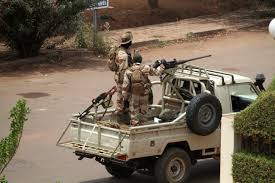Why Did China Create SCO?
Stratergic Intrest in Central Asia
- USA's = the USA want to contain the hegemonic ambitions of Russia and China (Through NATO)
- Russia's = Wants to reassert influence in post-soviet (CSTO)
- INDIA's = Envisages stability, resources, and national security of India (CCAP)
- CHINA's = Want to curb extremism spillover, take central Asia resources, and use central Asia as the main market for its product.
Member states of the Shanghai Cooperation Organisation
1. Eight Member States of the Shanghai Cooperation Organisation
- China,
- India,
- Kazakhstan,
- Kyrgyzstan,
- Russia,
- Pakistan,
- Tajikistan and
- Uzbekistan.
2. Observer States of Shanghai Cooperation Organisation
Interested in acceding to full membership - Afghanistan,
- Belarus,
- Iran, and
- Mongolia.
3. Dialogue Partners of Shanghai Cooperation Organisation
- Armenia,
- Azerbaijan,
- Cambodia,
- Nepal,
- Sri Lanka and
- Turkey.
The Structure of the Shanghai Cooperation Organization (SCO)
- The Council of Heads of State is the top decision-making body in the SCO. This council meets at the SCO summits, which are held each year in one of the member states' capital cities.
The Council of Heads of Government is the second-highest council in the organization. This council also holds annual summits, at which time members discuss issues of multilateral cooperation.
The Council of Foreign Ministers also holds regular meetings, where they discuss the current international situation and the SCO's interaction with other international organizations.
The Council of National Coordinators coordinates the multilateral cooperation of member states within the framework of the SCO's charter.



















